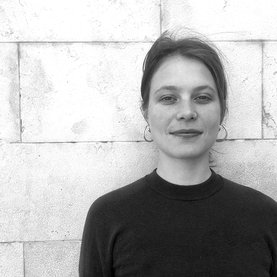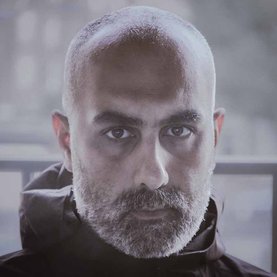ADS2: Alterworlds: Rehearsing Life in the Unlivable
Jump to
ADS2 designs for life in unlivable environments. Working at the intersection of socio-environmental justice and architecture, the studio fosters systemic and reparative projects that support the emergence of liberatory futures from the ruins of empire.
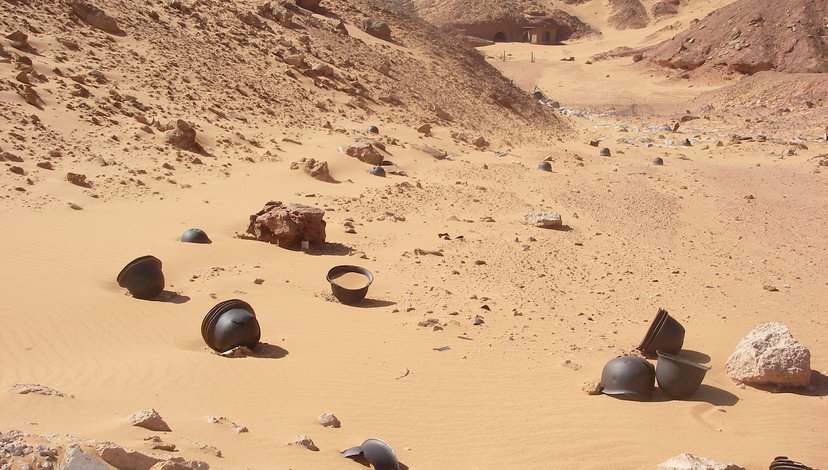
Bruno Barrillot, France’s nuclear sites in Reggane and Ecker in the Algerian Sahara
Studio Tutors: Lodovica Guarnieri, Shehrazade Mahassini, & Mhamad Safa
Through the design of community activations, sonic atmospheres, urban and/or environmental interventions, counter-pedagogical spaces, and material supply chains, the studio recasts architecture as a practice that resists violence by building infrastructures for the living.
Occupation, contamination, displacement, and ecological collapse are spatial conditions that constrain life and living across bodies, species, and generations. As Judith Butler and Frédéric Worms noted in their conversation on 'The Liveable and Unliveable' (École Normale Supérieure, Paris, 2018), unlivability emerges at the intersection of global extractive infrastructures and the systemic dispossession of local ecologies and communities, where “the most extreme point of human [and non-human] suffering and injustice” occurs. It is not simply a consequence of capitalist development but a designed condition that ensures its continuity and expansion. [1]
[1] 1 Butler, J., & Worms, F. (2023). The livable and the unlivable. In Fordham University Press eBooks. https://doi.org/10.5422/fordham/9781531502737.001.0001
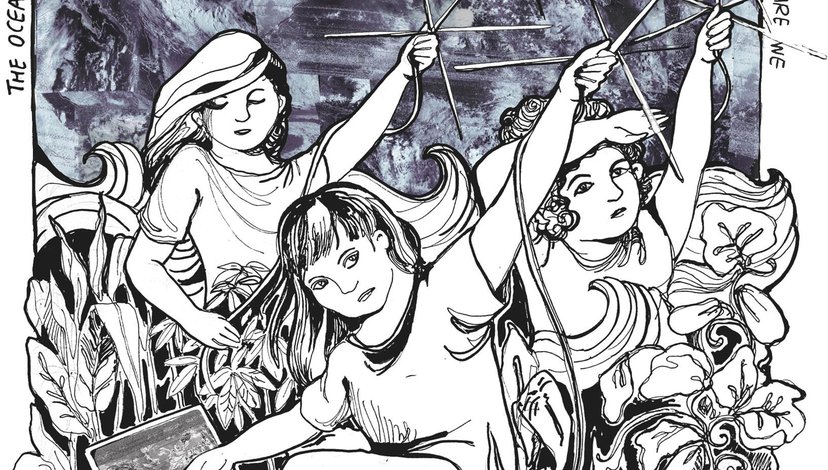
Golrokh Nafisi for Open-weather
And still, marginalised collectivities forge situated practices of resistance and care that challenge such a system of imperial world-making. These are not gestured toward a supposed purity, but rehearse life-worlds that make it possible to persist and become otherwise in the aftermath. Cooperative stewardship, solidarity economies, and communal forms of repair enact infrastructures that sustain life from within the ruins, composing the grounds for decolonial, non-extractive futures.

Ian Davide Bugarin, ADS2 - 2023/24
ADS2 responds to zones rendered uninhabitable by cumulative extraction by producing architectures that reinforce the alter-worlds emerging from resisting collectivities. It operates with and within human and more-than-human assemblages to build infrastructures of relation that stretch from ancestral pasts into possible futures, offering moments of rupture, reconfiguration, and transformation. Through engagements with transgenerational and more-than-human systems and temporalities, the studio develops spatial propositions that contribute to structural transformations that abolish, uproot, and dismantle oppressive systems.
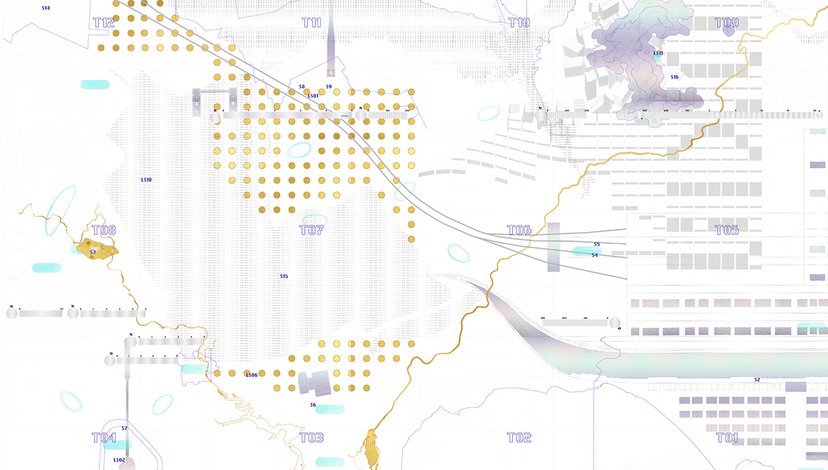
Cassandra Adjei, Bank Note Site Map, ADS2 - 2023/24
Method and Design
How can architects engage with the collectivities that form within hostile environments, and how can they develop propositions that reinforce these grassroots and disruptive spatial practices?
Refusing the comfort of resolution, the projects developed in the studio will propose communal forms of repair that rehearse implausible-yet-real presents — formulating a design practice attuned to reinforcing liberatory alter-worlds nestled in the reality of the now.
To do that, students will operate at the scale and temporality of the collectivities they engage, working in situated collaboration with relevant stakeholders such as activists, scientists, community campaigners, and research organisations.

Lovely Jayne Javier "Echoes of the Habwoyan" ADS2 2024/25
Projects will emerge from situated analyses that will use sensing methodologies to dissect inhospitable conditions emanating from studied sites - including the sonic, micropollutants, dryness and/or wetness. These analyses will not only produce visualisations of how atmospheric violence acts across material and temporal scales, but also guidelines for design strategies.
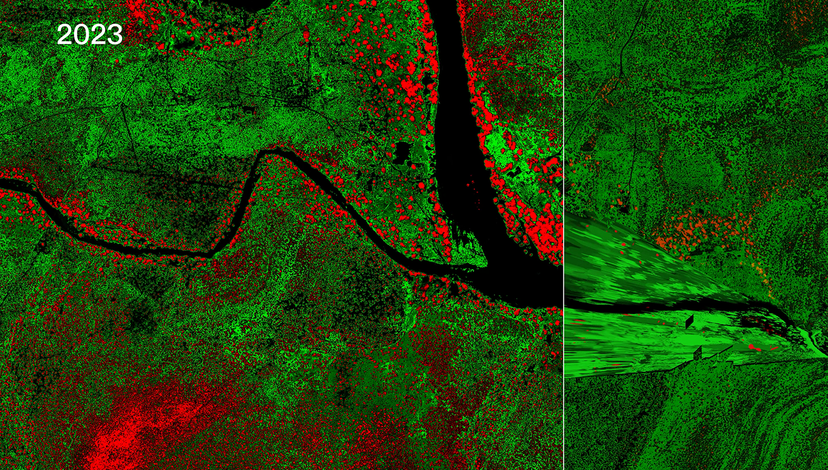
Forensic Architecture/Forensis, The Environmental Continuum of Genocide in Namibia (film still, 2025)
The process will focus on digital technologies (such as heat mapping, cloud studies or photogrammetry) as well as oral testimonies, archival research, and other ways through which environmental and social conditions of violence and resistance can be mapped and visualised. Not limited to conventional practices of mapping or counter-mapping, ADS2 will approach sensing as a situated practice—one shaped by technologies, environmental concerns, bodies, and politics. Following Jennifer Gabrys, sensing will “concretise into specific occasions that can galvanise citizen sensing in certain ways.”
Live Project/Field Trip
The field trip will take place in Venice and Rome. The live project will collaborate with local associations in the UK and Italy on music and listening as abolitionist spaces.
Teaching Day: Thursday
Tutors:
Dr Mhamad Safa is a London-based sound artist and architect whose work explores the intersection of multi-scalar spatial conditions and their sonic make-ups. His practice addresses the aural legacies of traditional subcultures, occultism, armed conflicts, shock, and the aftermath of violence. He graduated from the Centre for Research Architecture at Goldsmiths, University of London in 2019 and received his PhD from the University of Westminster in 2024. He is an Associate Lecturer in Architecture and Media Studies at the Royal College of Art in London. He is a founding partner in Aux.Eye Studios, a sound and music post-production studio.
Lodovica Guarnieri is a designer, researcher, and educator whose work explores the entanglements between ecology and modern infrastructures. Her practice interrogates technoscience in relation to the toxic afterlives of extractivism and colonialism in aquatic environments. She develops counter-pedagogical initiatives and sites in the form of programmes, performances, and networks to envision new imaginaries for socio-environmental justice. Currently, she co-leads The Tidal Garden, a research agency based in Venice (IT) that explores the edible potential of salt-tolerant plants as a tool for cultural adaptation to climate change. She holds an MA from the Centre for Research Architecture, Goldsmiths, University of London.
Shehrazade Mahassini is an artist, architect, researcher and educator working at the nexus of architecture, art and curatorial practice. After graduating with a BA from the University of Applied Sciences in Cologne and an MSc from the Bauhaus University Weimar in Germany, she worked in Berlin, London, and Zurich. In 2022, she founded studio:institute, a spatial practice embedded in critical and transdisciplinary research, where the intersectional lens on the built environment helps (re)discover and explore (new) typologies – between representation, negotiation, and appropriation. Parallel to her practice, Shehrazade is a PhD candidate at the School of Architecture, Royal College of Art in London. Her research focuses on the colonial continuum of water extraction in Libya and the broader SWANA region. Embedded in decolonial studies, Arab and Afro-feminism, her research aims to create new narratives and questions the historicity of space production in former colonies and how it relates to segregated urban spaces in contemporary Western society. In 2023, she taught at École Polytechnique Fédérale de Lausanne (EPFL). She is currently an Associate Lecturer (Studio) at the Royal College of Art in London and the Chair of Affective Architectures at ETH Zurich, and a visiting lecturer at Technische Universität Braunschweig.
